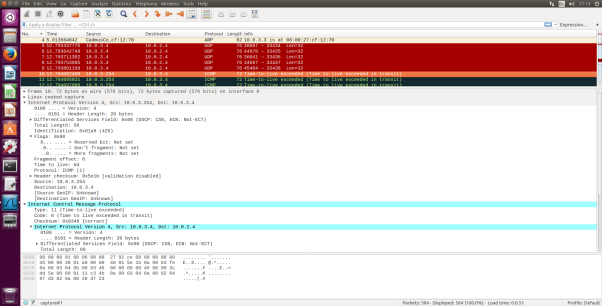

- #WIRESHARK USES REDDIT INSTALL#
- #WIRESHARK USES REDDIT DOWNLOAD#
Therefore, 41.242.139.31 -> 207.180.200.5 means the packet originated at host 41.242.139.31, which is my computer, and is headed for destination 207.180.200.5, which is the remote server where TShark is installed. The arrow's direction indicates which direction the packet is going. These lines include two IP addresses on either side of an arrow-these are the hosts that are exchanging the packet. The packets above are denoted by numbers at the beginning of the line. If we wanted to capture traffic on eth0, we could call it with this command: tshark -i eth0 To get this information, you will need to run the command below: # tshark –D

You may need to use sudo or root access in this case. It uses the pcap library to capture traffic from the first available network interface and displays a summary line on each received packet's standard output.īefore we start any capture, we need define to which interfaces on our server TShark can use. Without any options set, TShark works much like tcpdump.
#WIRESHARK USES REDDIT INSTALL#
On Red Hat Enterprise Linux (RHEL) 8: dnf install wireshark Use cases On Red Hat Enterprise Linux (RHEL) 7: yum install wireshark Wireshark can be installed with the standard simple commands. Linux system administration skills assessment.A guide to installing applications on Linux.
#WIRESHARK USES REDDIT DOWNLOAD#
Download RHEL 9 at no charge through the Red Hat Developer program. Output can be exported to XML, PostScript, CSV, or plain text. Coloring rules can be applied to the packet list for quick, intuitive analysis. Decryption support for many protocols, including IPsec, ISAKMP, Kerberos, SNMPv3, SSL/TLS, WEP, and WPA/WPA2. Live data can be read from Ethernet, IEEE 802.11, Bluetooth, USB, and others (depending on your platform). Capture files compressed with gzip can be decompressed on the fly. Read/write many different capture file formats: tcpdump (libpcap), Pcap NG, Cisco Secure IDS iplog, Microsoft Network Monitor, and many others. The most powerful display filters in the industry. Multi-platform: Runs on Windows, Linux, macOS, Solaris, FreeBSD, NetBSD, and many others. Deep inspection of hundreds of protocols, with more being added all the time. On its website, Wireshark describes its rich feature set as including the following: It supports the same options as Wireshark. TShark is a terminal-oriented version of Wireshark designed to capture and display packets when an interactive user interface isn't necessary or available. It enables you to see what's happening on your network at a microscopic level. It lets you interactively browse packet data from a live network or a previously saved capture file. Also, if you have no dissector to the format you're sniffing or the dissector is incomplete (let's not even get started on incomplete fields, ugh) you're looking at a lot of groundwork.Wireshark is a GUI network protocol analyzer. You can also directly use the -E and -z fields, but you might have to write your own statistics package if you want something complex. If nothing else you can -R -T pdml to dump the entire thing to PDML, then use any XML analyzer (python's etree is very handy) for doing with the data whatever you like. I'm actually in the process of writing my thesis on a subject that involves pushing libpcap limits, it's an interesting topic.įor the purpose you're describing I suggest you look at tshark, it's a command-line libpcap implementation (actually comes with wireshark in most cases) and runs the same dissectors wireshark does. Wireshark is just a GUI implementation of libpcap, with the possibilities and limitations therein. You shouldn't limit yourself to Wireshark.






 0 kommentar(er)
0 kommentar(er)
